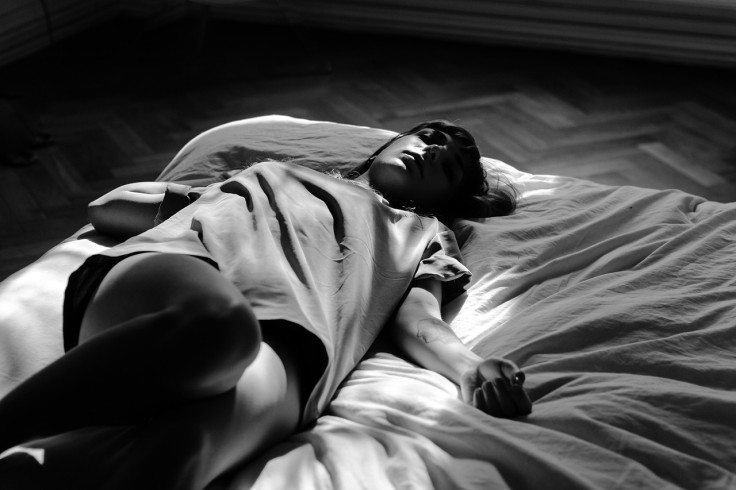What Is 'The Blade'? Inside LA's Most Notorious Sex Trafficking Corridor Where Minors Are Allegedly Exploited in Broad Daylight
Ana was put on 'the Blade' for sex when she was only 13, alongside her sister, who was 11 at that time

Los Angeles, a city full of life and glamour, it's where dreams of fame come true—home of Hollywood and the red carpet.
But for foster kids turned runaways turned recruits on LA's notorious red-light district, 'the Blade', the story is very different. It's one of the most infamous sex trafficking corridors in the US, where even children as young as 11 years old are exploited in broad daylight.
What Is 'The Blade'?
The Blade, a roughly 50-block stretch — about two miles of Figueroa Street is lined with churches and schools, yet it has become one of the most notorious sex-trafficking corridors not just in Los Angeles, but in the United States.
Women in lingerie, thongs, and high heels can be seen walking the streets in broad daylight, waving at cars to attract customers — like Ana, a 19-year-old scanning the intersection to meet her trafficker's quota.
In The New York Times, Ana said that she was first put out on 'the Blade' for sex when she was only 13 years old, alongside her sister, who was 11 years old at the time.
She shared that a friend from Instagram had promised to help them earn money, but instead dropped them at a Figueroa motel, handed them lacy bikinis—demanding to turn in £640 ($800) each by morning, a target that meant serving at least half a dozen men each.
Meeting Quotas
Over time, Ana learned the rules of the Blade — she knew everything, from how to flag down cars to which motels were 'in use,' and that she had to return to the street every 30 minutes to meet her £960 ($1,200) quota.
Los Angeles Police Department sources who work in the area said that sex acts are paid for as little as £32 ($40) and many are selling their bodies for £125 ($160) or less at a time.
Unlike other streets known for prostitution, Figueroa Street is eerily quiet — no honking, no shouting. Cars line up calmly, drivers waiting like customers in a drive-through, choosing before moving on.
@nytimes A 50-block stretch of Los Angeles has become one of the most notorious child sex trafficking corridors in the U.S. Our reporter Emily Baumgaertner Nunn rode along with undercover officers trying to rescue the girls and arrest the traffickers. Video by Emily Baumgaertner Nunn, Christina Shaman, Kassie Bracken, Stephanie Swart, June Kim and Christopher Orr/The New York Times #losangeles #figueroastreet
♬ original sound - The New York Times
Authorities' Effort
The 77th Street Division of the Los Angeles Police Department oversees the northern half of the Blade. Their work includes online sting operations, motel raids, and 'juvie rescue ops' — sweeps to find underage girls, help them escape, and gather intelligence on their traffickers.
The vice unit has identified hundreds of suspects, but building strong cases requires extensive evidence, often relying on rescued juveniles to provide crucial information.
Nonprofits like Journey Out, which combat sex trafficking, are also assisting, though they say the work has become increasingly difficult over the years.
'The Blade' is Busier Than Ever
Thanks to California's new law, Figueroa Street is busier than ever—women lining up in the street waving their hands for the next customer in broad daylight.
Since Governor Gavin Newsom's Safer Streets for All Act decriminalised loitering for prostitution, police say arrests have become nearly impossible. They can't step in unless the women look underage.
'Before, this kind of activity only happened at night when most people wouldn't see it, but now it's 24/7,' one LAPD source told the New York Post.
Critics of the law have also expressed their concern, saying it only triggered a 'prostitution free-for-all.'
Victims Don't Realize They're Being Trafficked
Anti-human trafficking advocate and former LAPD vice sergeant Stephany Powell said 'When SB-357 passed, pimps were bragging on social media, telling the girls to get out there and work because they thought prostitution was now legal. It only made them push the girls harder.'
However, officers say that even when minors are taken into care, most are back on the streets within days.
Executive director of Journey Out, Nayeli May, said that many victims don't even realise they're being trafficked due to the psychological and physical control their traffickers exert.
'When police used to stop them, they would often connect them with organisations like ours before pressing charges,' May explained. 'We could step in and get them help — but that's not happening anymore. They can't even talk to the girls.'
According to LAPD data, six rapes were reported in the area last month alone, and 51 so far this year, and 95% of the women working 'the Blade' have pimps who are closely tied to street gangs.
© Copyright IBTimes 2025. All rights reserved.





















